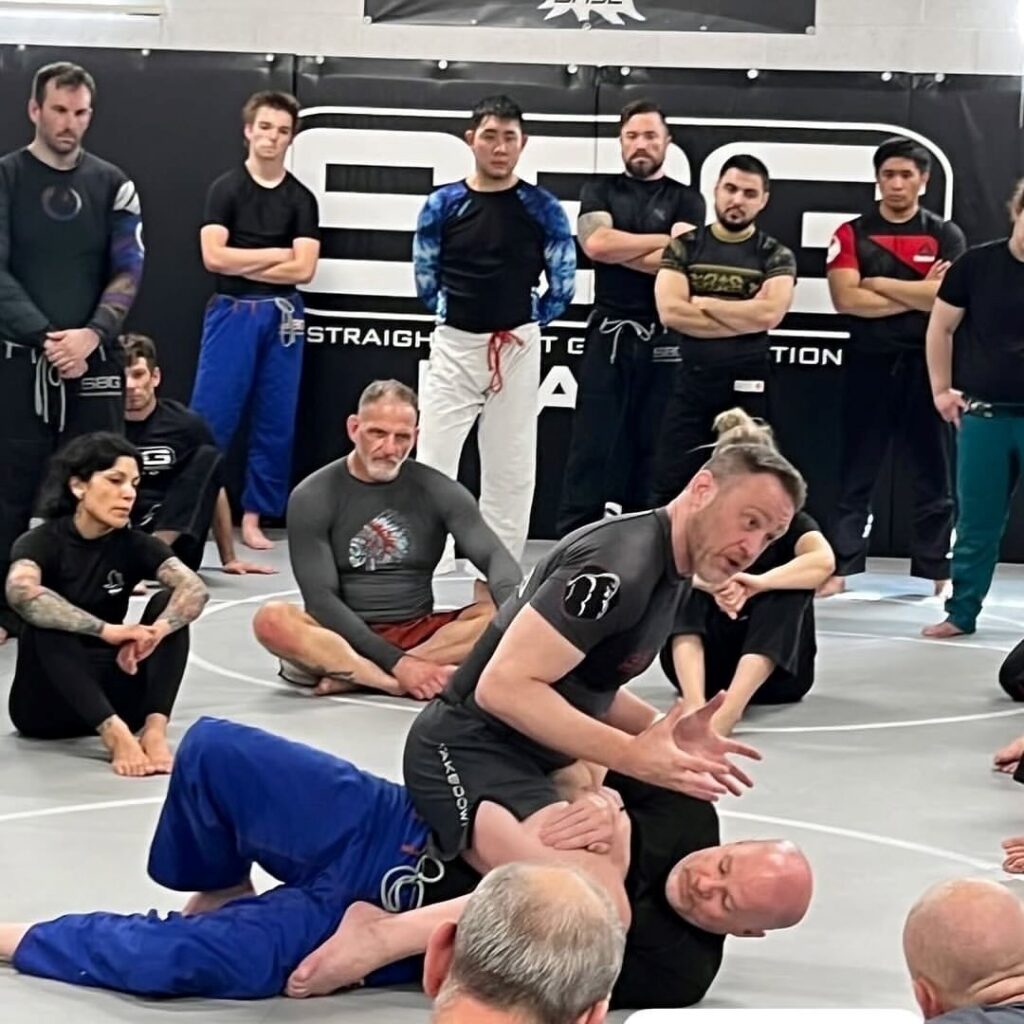Last weekend I had the pleasure of teaching once again at our SBG International training camps, this time back in Boise, Idaho.
My seminar this time was on Mount top control and attacks.
As I’ve mentioned before, many higher belts (including black belts) unfortunately do not feel that they have the same ability to maintain position and finish opponents from mount that they do from other positions, such as side control or back control.
Personal preference aside, this is a mistake…
The mount (and it’s variants) is the most dominant position in fighting. If you do not feel comfortable attaining it, maintaining it, or attacking from it, I wholeheartedly suggest you put the time in to working on these skills.
My section on Mount top this year was conceived with all this in mind.
Here are some key principles and tips:
1. Your legs are for control, your arms are for advancing position and attacking.
This is an 80/20 concept, meaning at least 80% of the control you have over your opponent is done with your lower body, and only 20% or less is dependent on your arms and hands. Instead of control, your arms and hands should mostly be free for advancing your position –– putting more and more pressure on your opponent and making it even more difficult for them to escape –– and for attacks (submissions and / or strikes).

Specifically, this means that you should always at all times be cinching your legs onto your opponent’s body, taking away all the space. If you’re in an upright mount, this means having your knees pinched tight and your forelegs (knees to feet), always biting in.
2. In low mount, be a lead blanket
If both of your opponent’s thighs off the ground, you can always transition into low mount. In addition to always biting with your legs as mentioned above, you want to apply weight distribution by taking your knees slightly off the mat while keeping your upper body relaxed and draped over your opponent like a sandbag.
3. When possible, get at least one underhook
Underhooks with control just about the elbow massively compromise your opponent’s ability to escape and make it easy to advance your position, apply even more pressure from top while using almost zero energy, and can lead directly into submissions.
Even better, once you have one underhook, it becomes much easier to get a second underhook, at which point it becomes next to impossible for your opponent to escape.
4. Create constant dilemmas
Mount is one of the best positions for making all of your opponent’s responses –– including “correct” responses –– wrong.
The control points mentioned above and the pressure they create buy you time to attack. Constantly cycling control and attacking puts even more pressure on your opponent, forcing them to focus entirely on surviving rather than escaping.
For example:
• If they use their frames to keep you down by their hips (which is correct), attack their neck. If they bring their hands up to defend their neck, advance up their body to where their escapes are neutralized and attack again.
• If you have an underhook and they bump to pull their arm back in, immediately attack their neck (e.g. with an ezekiel or punch choke). You either get the submission or they bring their arm up to defend, which allows you to repummel for the underhook.
5. Stay above the hips
Your opponents legs have a lot of mobility. If your feet are below the hips, the bridge, the elbow escape, the kipping escape, etc. are all available to your opponent.
But the hips bones don’t move, they’re fixed. So if your feet are on the hips, they are above the hinge point and out of range of your opponent’s legs. At this point, all of the primary escapes become unavailable, so you can focus exclusively on offense whereas your opponent has to focus exclusively on regaining lost ground before they can attempt to escape.
